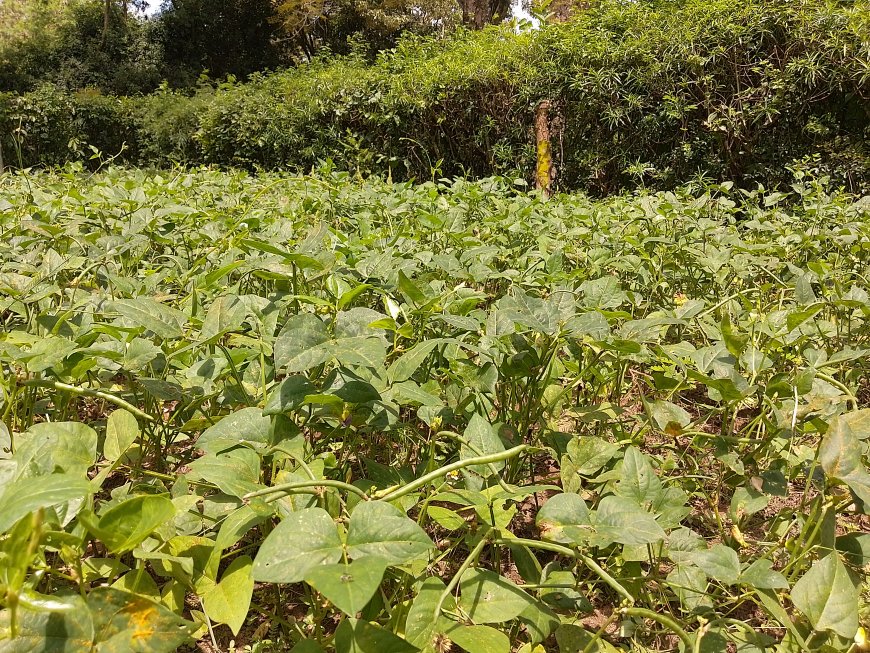Exploring the Culinary Wonders of Cowpea Leaves

Teso,
Tuesday, November 28,2023
KNA by Absalom Namwalo and Owen Mutai
With the growing clarion call from doctors for nutrient and iron for hypertension and diabetic patients, indigenous vegetables are becoming an unavoidable item on the table both in rural and urban setup.
There's a vibrant green gem that has been quietly making its mark on plates across the world from its richness in fibre, vitamins A and C which helps in improving digestion and relieving constipation without forgetting boosting the immune system.
Cowpea, locally known as "Kunde" has conquered most kitchen gardens at Amagoro village in Busia County and beyond due to its early maturity usually between 3-5 weeks before first harvest.
Besides being a staple in many African and Asian cuisines, these nutrient-packed leaves have been gaining global recognition for their health benefits and culinary versatility.
According to Elizabeth Marangach a kitchen gardener at Amagoro, ‘Kunde’ is a traditional African vegetable whose preparation is entrenched in the cultures of native African communities. The use of “Munyu”, a traditional lye derived by leaching a variety of dried plant matter, remains vital here.
“Cowpeas contain the amino acid tryptophan which helps in the formation of melatonin in the body, which may help improve sleep patterns and reduce insomnia,” said Marangach the Sub County Education Director, Teso North Sub County.
Cowpeas thrive in areas with dry conditions, growing well in soils of up to 85% sand. This makes them a particularly important crop in arid and semi-arid regions where not many other crops grow.
Apart from being an important source of food for humans, the crop can also be used as forage for livestock. Its ability to fix nitrogen in the soil means that as well as functioning as a sole crop, the cowpea can be effectively intercropped with sorghum, millet, maize, cassava, or cotton.
In Teso North sub county, the low and erratic rainfall and lack of irrigation facilities limits the production of vegetables on a large scale. Still, exotic vegetables are grown in kitchen gardens, whereas nutrient-rich indigenous vegetables are rarely produced nor consumed.
An exclusive interview with a nutritionist at Kocholia Subcounty hospital doctor Amos Wafula, consumption of vegetables is limited despite the occurrence of malnutrition among children and women.
In addition, indigenous vegetables having a ready market at Malaba, Busia and adjacent towns like Bungoma and beyond, the vegetable remains useful in the general development of children.
“Production of indigenous vegetables has enhanced the livelihoods of many farmers through income generation besides consumption of the same enhancing their nutritional status,” noted Wafula.
There is a need for farmers to be trained in techniques of farming these indigenous species in addition to training on how to prepare and consume the vegetables.
“Most parents lack awareness of the nutritional value of these vegetables to children and con communicable disease. Most locals believe red meat is more nutritious than vegetables, a myth which is not true,” he added.
Madam Marangach challenged women to embrace the traditional approach by ensuring every household has a functioning kitchen garden.
“It is abnormal for mature mother to buy every vegetable on the market. Atleast have some within your compound whether on rented apartment or own home state,” she noted.
Courtesy; KNA
What's Your Reaction?
































































































































































































































































































